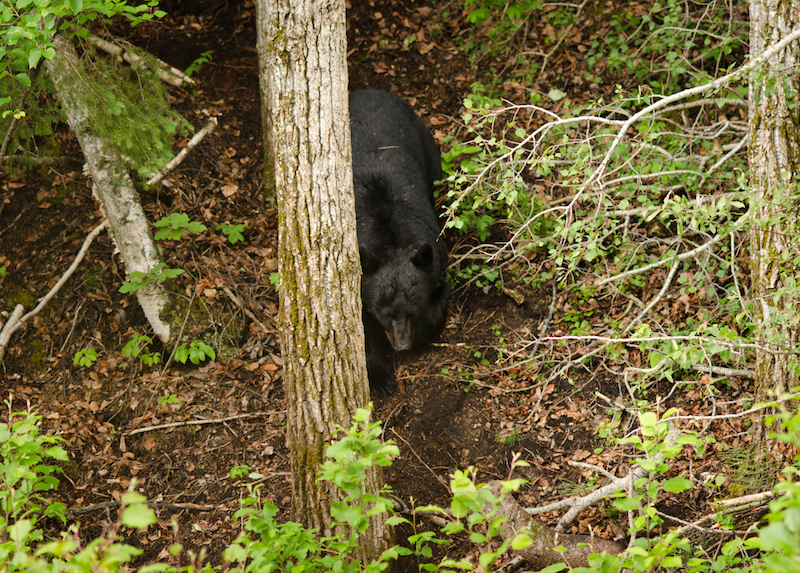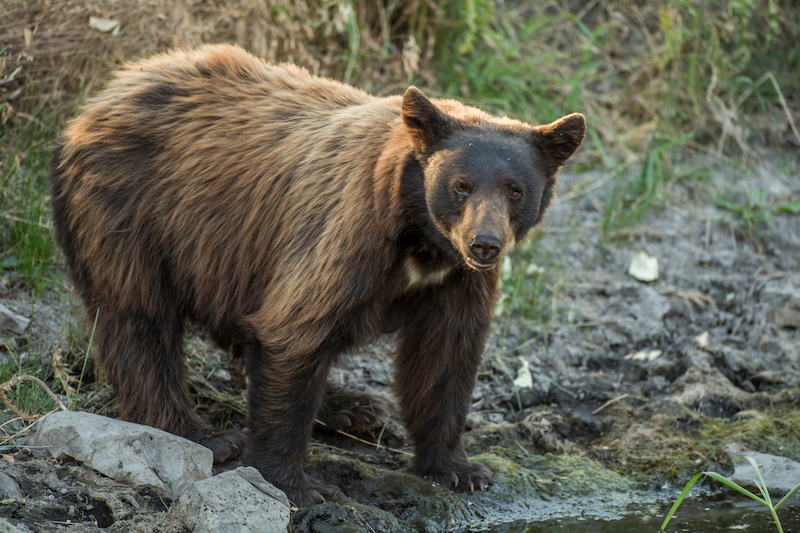When discussing spring bowhunting opportunities, most people consider turkey hunting. Bears, however, can often be hunted during spring, which provides delicious meat and helps control their numbers. As with most big-game animals, bears are managed to sustain a healthy balance between predators, prey and habitats.
Keeping bears in check can also mitigate conflicts with people and property. Some states and provinces also allow bear hunting during fall, and sometimes offer several methods for hunting bears, which we’ll discuss.

Bears mainly roam across North America. Photo credit: John Hafner
Four bear species live in North America. Brown and grizzly bears roam Alaska, western Canada and a handful of Western states. Polar bears live in far northern Canada and Alaska. Black bears, the smallest and most common bear species, range from central Mexico to the Arctic Circle, and the Atlantic to Pacific. They’re most numerous across Canada, the northern U.S. and inner-mountain West. The only regions without black bears are the Eastern plains and Midwestern heartland.
Because black bears are North America’s most abundant bear and the most commonly hunted, they’ll be our primary focus.
Black bears thrive in many diverse environments because they’re omnivores, and commonly eat nuts, plants, insects and other mammals. Hunters should learn the impacts black bears can have on other game species. A four-year study in New Mexico, for instance, found black bear predation was the primary cause of summer mortality for elk calves. The spring harvest quota on black bears increased during the study, which found that for every bear killed, elk-calves were 2.4 percent more likely to survive summer.

Black bears can have varying coats in different shades and color-combinations. Photo Credit: John Hafner
Foxes, squirrels, coyotes and other mammals have genetic traits that cause variances in fur color. This phenomenon is called “color phase.” According to the North American Bear Center, black bears feature more colors than any other North American mammal. Their furs can be black, brown, tan, cinnamon, blond and white. Most bears in Eastern states and Canada are black, while those west of the Great Plains vary more in color. In the Southwest, tan and blond bears are most common.
Science suggests color variations are linked to the bear’s environments. Black coats make for good camouflage in dense timber, while lighter-colored bears can hide more easily in more open, arid areas. Their light-colored coats make them less bothered by hot temperatures and direct sunlight.
Hunters primarily use four methods to hunt bears: baiting, calling, spot-and-stalk, and trailing with hounds. Bowhunters use all of these methods, but states regulate when and where some of these practices can be done. Some states allow hunting beas over bait or with hounds. Other states allow neither method, and some others allow hound hunting during a separate season.
Always check state and local regulations where you hunt. Hunting methods for bears are often debated, and it’s important to understand why some practices are allowed in some states but not others. Thick forests in Eastern states and Canada can be extremely difficult to hunt. Bears can easily elude hunters, and shooting opportunities often require quick decisions.
Hunting with bait or dogs provides better opportunities to judge the animals’ age and sex. Many states forbid shooting a female bear with cubs. By using bait, bowhunters can study the bears to ensure they arrow males.
Successful bowhunts for bears yield more than beautiful hides. Bear meat provides excellent table fare. Bears, however, often carry trichinosis, which sparks misconceptions about eating bear meat. Just remember that trichinosis is also found in pork. Both meats must be cooked thoroughly to ensure safe eating.
According to wild-game cooking author Hank Shaw, trichinosis parasites die at 137° Fahrenheit. Holding the meat at 145° Fahrenheit for an hour yields a medium finish. You can also kill the trichinosis parasite by freezing the meat at 5° Fahrenheit and below for at least 20 days. Shaw notes it can take several days for the meat’s core to drop that low, so take that into account.
If you’re seeking a change of pace this spring, try bear hunting. Black bears are awesome creatures to hunt and study at bowhunting range. With spring nearing, it’s time to gear up for bear season and practice archery. Find a nearby archery shop and range so you’re ready to hunt this spring.